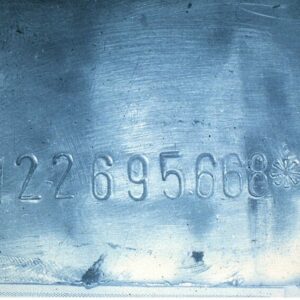United States v. Cedric Hayes, 7th Circuit, filed October 3, 2017: Enhancement Due to “Altered or Obliterated” Serial Numbers on Firearms
This opinion addresses the extent to which a serial number on a firearm must be altered so that the 2K2.1(b)(4)(B) 4-level enhancement under the Federal Sentencing Guidelines will apply. As it turns out, not much.
Hayes was indicted on two counts of being a felon in possession of a firearm. He pleaded to one count. The serial number on the firearm he illegally possessed had been covered with a paint-like substance that prevented the serial number from being visible. Based on that, the government argued he should be subjected to the enhancement because the serial number was “altered or obliterated.”
The Seventh Circuit held that the relevant inquiry is whether there has been a material change to a serial number “that makes accurate information less accessible.” See United States v. Carter, 421 F.3d 909, 916 (9th Cir. 2005); United States v. Perez, 585 F.3d 880, 884 (5th Cir. 2009); United States v. Jones, 643 F.3d 257, 258-59 (8th Cir. 2011). The Seventh Circuit agreed with the reasoning of the Ninth Circuit that “altered” requires a lesser degree of defacement than “obliterated,” and that the statute, as evidence by its inclusion of both phrases, is intended to capture a fairly low threshold of destruction for the enhancement to apply. As the Ninth Circuit, in Carter, discusses, the legislative history of the enhancement shows that its intent is to discourage the use of untraceable weaponry. Any material change that makes the serial number less accessible, thereby making it harder to trace, fits the statute’s definition of “altered or obliterated.” The Court concluded that the paint-like substance on this gun “surely makes the firearm more difficult to trace.”
So, important principle here. It will not take any particular amount of destruction to the serial number for the enhancement to apply; just anything that makes it materially more difficult to see.

